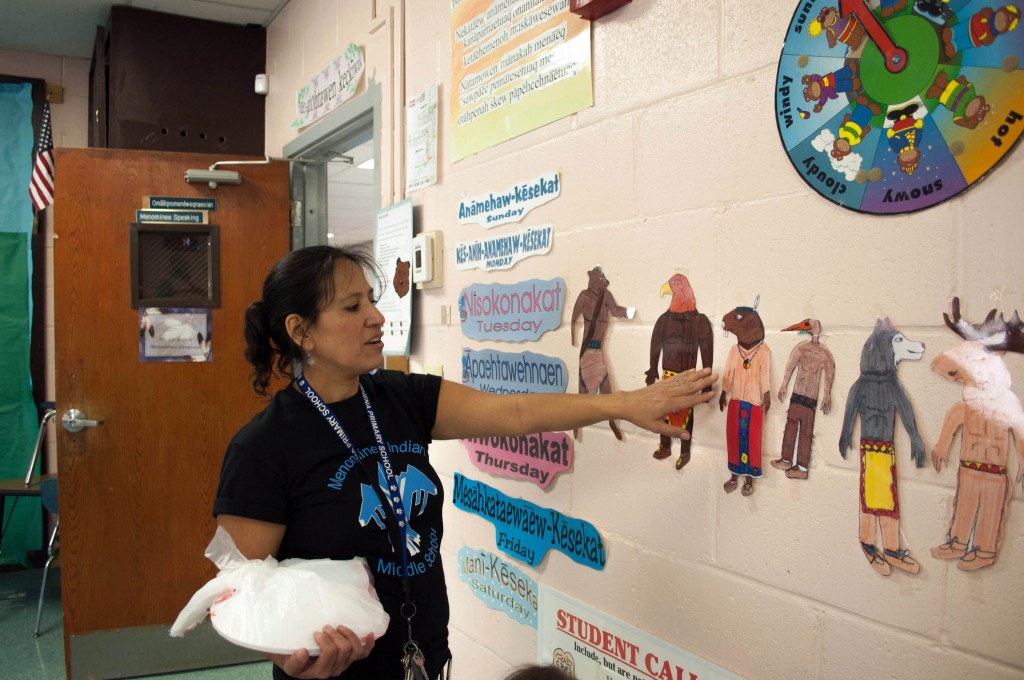Striving Higher at UW
When Native students successfully navigate primary and secondary education, some continue to feel cultural discord in higher learning.
At UW-Madison, Native students from tight-knit family backgrounds can feel alienated despite living in crowded dorms and seeking out solidarity with others through the Native American student group Wunk Sheek. Still they are “haunted by a pervasive sense of loneliness,” Hill says.
For Hill, this loneliness stems from feeling culturally different and not the homesickness many freshmen experience.
Finding a community in college becomes an important step for the success of Native students. Students attending UW-Madison can study and socialize in the American Indian Student & Cultural Center (AISCC), a house on campus.

Photo by: Emily Genco
Currently in Wisconsin, 3,307 American Indian men and women over 25 have attained a bachelor’s degree or higher out of 28,638.
It’s easier to feel successful when you can meet with others, according to Hill. She attended UW-Madison for her last year of undergraduate study. At the time, there were 13 other Native students on campus.
“Because there were those 13 Indian students, I didn’t feel so totally alone. We kind of counted on each other. We weren’t even in any of the same courses, but we had a chance to get together and relieve the complexity of our experience by just talking about things that frustrated us,” Hill says.
Today, 35 tribes are represented on the UW-Madison campus. Ten of the eleven tribes in Wisconsin are present, and 402 students on campus self-identified as American Indian/Alaska Native in fall 2012.
Bridging the Gap
Without educating all students, Native learners may continue to experience cultural conflict in school. They may continue to have their braids pulled. They may continue to be taunted as they walk by just as Wade was.
The Department of Public Education has taken steps to bridge the gap and promote understanding about Native cultures. Beginning in 1991, school curricula began requiring Wisconsin schools to teach about American Indian culture, history and tribal sovereignty in social studies twice in the elementary grades and once at the secondary level.
Fernandez sees educators discussing Wisconsin Indians in fourth grade, but by the later grades, emphasis is lacking.
“There’s no teeth to the law. There’s no follow-up. There’s no way to ensure that people are doing this,” Fernandez says.
Others have recognized the need for greater diversity training in schools.
After the Sacred Heart incident, Joseph Bound, director of education for the Diocese of Green Bay, said the school would work to implement a diversity program to teach Menominee and other American Indian cultures to increase cultural awareness.
Fernandez went to the superintendent of Shawano schools and offered to similarly teach the students about Menominee culture after her son was teased.
“It’s like beating on doors to say, ‘Can I come in and help and combat this stuff?’” Fernandez says. “Because only through education are these young ones going to stop this perpetual cycle of racism because they’re learning it from home.”
Two years have passed. She’s still waiting for the district to call.
Related Posts:
